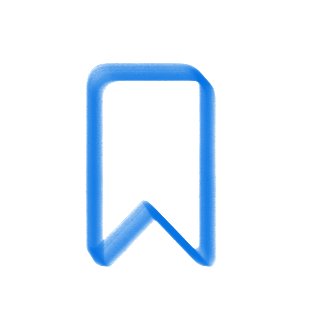It began with a coaching journal in Pages—a collaborative space where we documented our Apple Learning Coach cycles, shared reflections, and modeled possibilities for teachers. Along the way, we discovered just how powerful Pages book templates could be for creating and capturing learning. What started as a shared coaching tool quickly became a source of “what if” ideas from teachers—what if students could use this same format to design, document, and demonstrate their own learning?
That “what if” soon turned into a “yes, and” as we began co-designing Pages digital notebooks with teachers. Together, we built interactive book templates that transformed how students engage with course content—turning Pages into a multimodal digital notebook for creativity, reflection, and ownership of learning.
Tailored Templates for LearningMany secondary teachers as part of their coaching cycles quickly embraced how Pages book templates can be tailored to content-specific formats aligned with learning goals. Each notebook includes unit-based content, essential resources, and flexible page layouts that support content standards and learning outcomes. With each lesson, students add pages form the template chooser, building notebooks that reflect each students learning journey.
Instead of managing printed materials, teachers now upload their Pages notebooks for students in our Learning Management System (LMS). Students download and save their own copy to a designated iCloud course folder in Files, keeping content organized and accessible. This consistent workflow helps students develop strong digital organization habits and access course content at their own pace.
Custom Templates for Every Course
Teachers have taken this further—designing custom Pages templates that reflect the unique goals of their courses. A few examples include AP course guides, Wellness Journals, Science Lab notebooks, and Literature Review guides. Students engage with these interactive templates to:
- Take notes using strategies like sketchnoting or Cornell note-taking
- Embed multimedia
- Curate digital study tools
- Reflect on learning
- Write Essays
These Pages book templates have evolved into personalized learning experiences, empowering students to think critically and creatively.
Assessment and Feedback, Simplified
Teachers appreciate how seamlessly Pages notebooks fit into assessment and feedback workflows. During peer review or group work, students often swap iPads and use Logitech Crayons to highlight key ideas, add comments, or draw connections directly within each other’s notebooks—turning collaboration into an engaging, hands-on process. Students can export specific pages of their notebook as PDFs and submit them to the LMS for formative checks or summative assessments. Others record short videos or audio reflections to demonstrate their thinking—bringing voice and choice to how they share their understanding.
Empowering Students with Multimodal Tools
Students quickly discovered these digital notebooks are more than a place to take notes—they’re a space to create and connect ideas. Whether sketchnoting a science concept, recording an audio explanation in math, or embedding images and video reflections in ELA or social studies, students use Pages notebooks as a canvas for learning.
Students especially value the multimodal and accessibility tools that let them personalize their learning—making coursework inclusive and empowering for all learners.
Speak Selection & Predictive Text: Help students draft, revise, and edit essays or written assessments efficiently and accessibly.- Read and Speak: Allow students to listen to their writing read aloud to review flow, catch errors, and refine ideas—just like a peer editor.
- Scribble & Dictation: Enable students to edit typed text with Logitech Crayons or capture ideas quickly during collaboration and peer review.
- Translate: Supports multilingual learners and newcomers by helping them access, understand, and express ideas across languages within Pages.
Students have even started creating their own Pages book templates for courses that don’t yet use digital notebooks, extending the innovation independently.
Pages as a Framework for CreativityFor teachers and students, Pages has become a framework for designing creative, accessible, student-centered learning experiences. Each digital notebook acts as both a guide and a portfolio of learning, where students think deeply, collaborate meaningfully, and express their understanding in ways that matter.
We’ve witnessed the impact when classrooms embrace Pages book templates—every learner becomes the author, designer, and storyteller of their own learning.
Call To Action
Let’s inspire and learn from one another! How are you using Pages to help students become creators? Share your favorite templates, workflows, or student successes in the comments below.











October 18, 2025 . English
English
This is such an inspiring journey of transformation! I love how what began as a coaching reflection space grew into a framework for student creativity and ownership. The way you’ve reimagined Pages as a digital canvas, where learners can organize, create, and express their thinking multimodally (is that a word??!!) is such a beautiful model of what happens when teachers and coaches truly co-design. I’m especially inspired by how accessibility and personalization are woven throughout -- empowering every student to be the author of their own learning story. Thank you for sharing!!
This action is unavailable while under moderation.
This action is unavailable while under moderation.